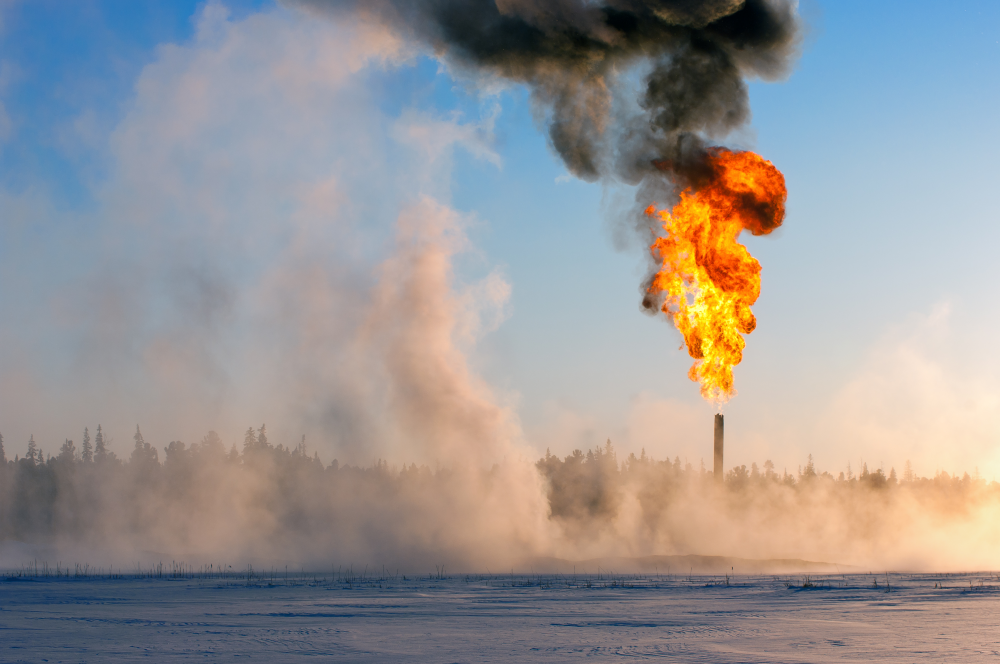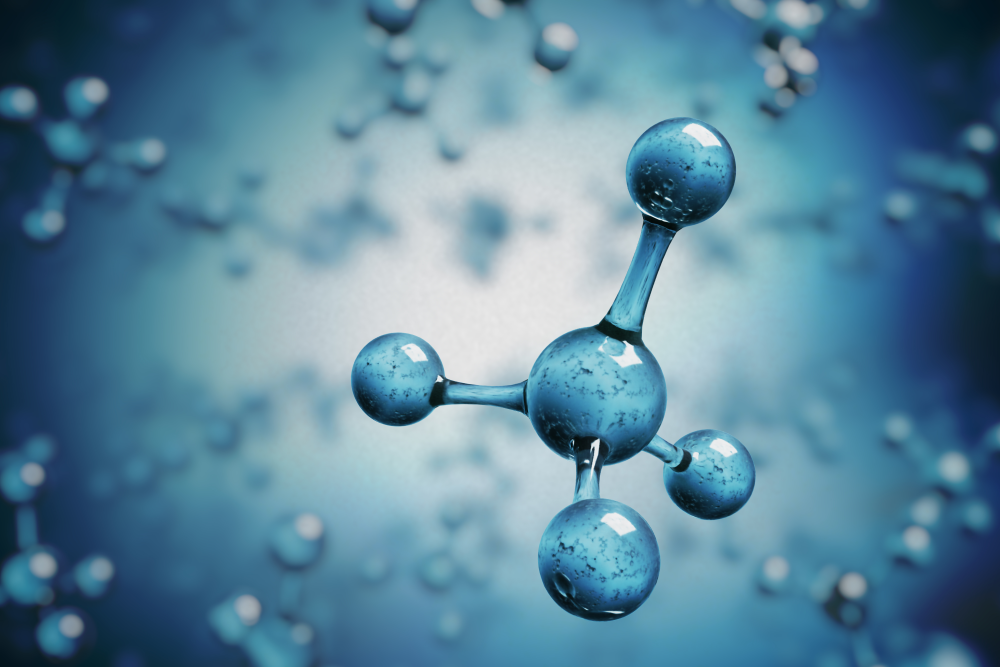Physicists Set their Sights on Curbing US Methane Emissions
While human-created carbon dioxide is the most abundant greenhouse gas in Earth’s atmosphere, anthropogenic methane is the most potent, causing at least 0.5 °C (1 °F) of the increase in Earth’s surface temperature since the late 19th century. Despite methane’s role in global warming, it has received less attention in efforts to curb climate change. Hoping to alter that, William Collins of Lawrence Berkeley National Laboratory, California, and his colleagues pinpoint large gaps in the monitoring, detection, and mitigation of methane emissions from oil and gas operations in the US [1]. In their new report, they say that the impact of filling those gaps could be seen within a few decades. Reducing methane is really the “low hanging fruit” for altering the course of climate change, Collins says. “It’s a way of achieving a win for the climate with relatively little pain.”
Today, the US emits over 5000 million metric tons of carbon dioxide equivalents (the unit used to measure greenhouse gas emission). Of that, methane emissions account for over 600 million metric tons. While that value is down about 17% since 1990, “humanity has still managed to equal Mother Nature in terms of methane emissions, which is not a particularly great accomplishment,” Collins says.
Roughly one third of the world’s methane comes from the oil and gas sector. This methane is emitted by, among other things, natural gas burning during oil extraction and leaky infrastructure. A large fraction of this unwanted methane (about 90%) is released by a relatively small fraction of the sources (about 10%), Collins says—a statistic confirmed by others. “Internal company data show that just a few massive methane leaks can account for most or all of the methane that a company reports,” said US Congresswoman Suzanne Bonamici (Oregon), who spoke at a recent hearing in Washington D.C. on detecting and quantifying methane emissions.
While this situation sounds alarming, scientists and policy makers think that it should be possible to make a significant dent on methane output with relatively little effort. “We don't need to eliminate every scintilla of methane emissions,” Collins says. “Stemming the biggest leaks will deal with the majority of the problem.”
Reducing these leaks could have a relatively immediate impact on Earth’s rising temperature trend. Methane molecules survive for only 12 years in the atmosphere, a tiny fraction of the time that carbon dioxide spends circulating (scientists estimate that it takes 300 to 1000 years for an emitted carbon dioxide molecule to be chemically “locked away” in the ocean or rocks). The comparatively short lifetime of methane means that the effects of curbing this gas could be seen in less than a generation. “Global temperatures in 2050 could be reduced by 0.5 °F if methane emissions are cut in half by 2030,” said David Lyon, a senior scientist for the Environmental Defense Fund who also spoke at the D.C. methane hearing.
Methane is beginning to be targeted by government initiatives, such as President Biden’s 2021 Methane Emissions Reduction Action Plan and the 2021 UN Climate Change Conference’s Global Methane Pledge, in which 113 countries (US included) signed on to reduce methane emissions by at least 30% from 2020 levels by 2030. Spurred by these efforts, Collins and his colleagues lay out the actions they think are needed to make a real dent in how much of this gas is spewed into the atmosphere. The team highlights three key scientific issues to address: improving the detection of methane emission sources, ramping up the sensitivity of methane detectors, and bettering modeling of methane’s interaction with sunlight.
Relative to carbon dioxide, methane’s interaction with sunlight is less well understood because of its more complex geometry. Carbon dioxide has a symmetrical structure with the two oxygen atoms bonding on opposite sides of a central carbon atom. When light interacts with the molecule, it can spin like a barbell or stretch its bonds a little, but not much else happens. That simple response makes carbon dioxide’s absorption spectrum relatively easy to model. The same cannot be said for methane.
Methane has a pyramidal structure, with its four hydrogen atoms bonding to the central carbon atom at angles of about 109°. That structure means that there is a “gigantic” number of ways that light interactions can rotate and vibrate the molecule, giving it an extremely rich absorption spectrum, Collins says. Scientists only have detailed information on about 40% of methane’s absorption spectrum at solar wavelengths, he adds.
The absence of detailed information makes it difficult to accurately monitor Earth’s methane sources. A common monitoring method is to use satellites, which simultaneously collect absorption spectra of all the atmosphere’s atoms and molecules. To help isolate the methane signal in the satellite data, Collins and his colleagues call for improved measurements of methane’s absorption spectrum. These spectral observations will also aid in reducing uncertainties in climate models. “Because carbon dioxide has been so exhaustively characterized, existing uncertainties in its spectrum lead to uncertainties in the predicted greenhouse effect of less than 1%. That is not the case for methane, where the uncertainties are considerably higher,” Collins says.
Closer to home, ground- or air-based observations at individual oil and gas facilities are also lacking, and when they are made, the data can be heavily guarded, “Some [oil and gas] operators treat data…like they are protecting gold bars stored at Fort Knox,” says Dirk Richter, an applied scientist at the University of Colorado Boulder who works in high-precision gas sensing. Richter designs and makes continuous methane monitors—he is the CEO of the manufacturing company Quanta3—and he thinks that the data these monitors collect should be made public. Collins and his colleagues agree. For that reason, they also call for the building of a national methane data repository that would be accessible to the global climate community. Environmentally conscious consumers might also be interested to see which companies are making efforts to lower methane emissions, Lyon says.
Collins, his colleagues, and others, argue that filling the gaps in monitoring, detecting, and mitigating methane likely can’t be done with existing devices. “New and innovative technologies really are the key to detecting and [reducing] methane as quickly as possible,” said US Congresswoman Lizzie Fletcher (Texas) at the D.C. meeting. Others aren’t so convinced. “It is a bit counterproductive to continuously call for more research funds to develop potentially even more expensive monitoring technologies,” Richter says. “The technology is ready. Many different “flavors” are available today and ready to be mass deployed.”
–Katherine Wright
Katherine Wright is the Deputy Editor of Physics Magazine.
References
- W. Collins et al., “Monitoring methane emissions from oil and gas operations,” PRX Energy 1, 017001 (2022).





